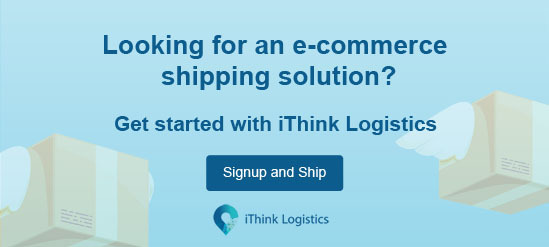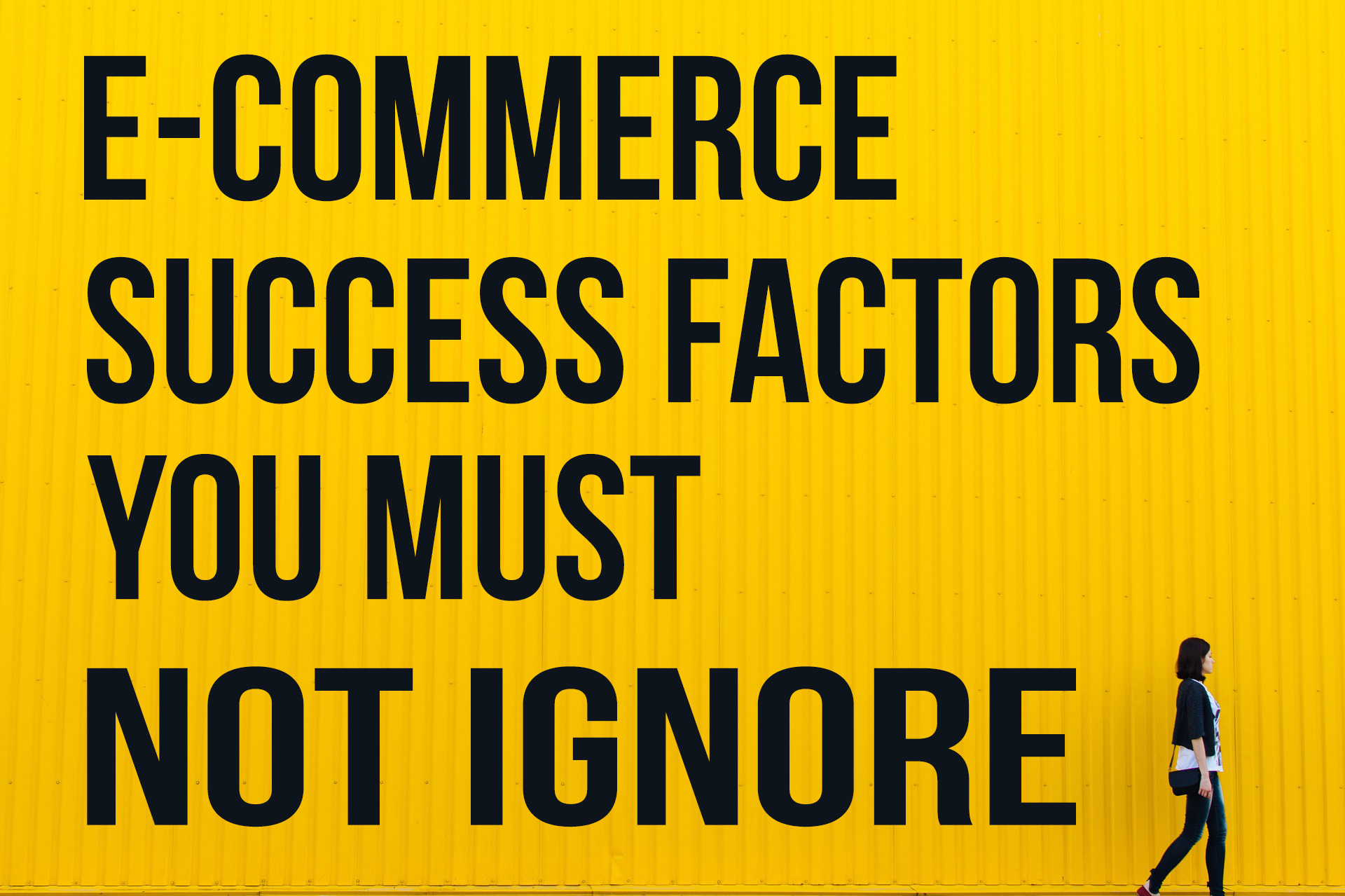E-commerce in India has come a long way. E-commerce business opportunity in India is higher than in any other country in the world as India is the fastest growing market (being the youngest country), and hence the e-commerce success factors matter a lot.
The purchasing power of the Indian population is increasing drastically.
People are becoming more tech-savvy, smartphones, internet usage and launch of the 4G network have become a necessity especially for people from cities and small towns.
E-commerce provides ease of doing shopping, and this is the central aspect behind the growth in online shopping.
Launching a new e-commerce venture can feel like an impossible dream when we look at Amazon or Flipkart. However, more and more sellers are looking to sell online and capture the untapped Indian market.
E-commerce businesses are breaking the barriers and enjoying the success point.
You need to understand the success factors of sound e-commerce businesses which are directly contributing to the e-commerce economy and also forming customer perceptions about online shopping.
Having great products to sell is one thing but offering them to your customers in a way is extended inference.
The majority of businesses fail to understand the fundamentals of e-commerce success.
Fundamentals of e-commerce success
You can apply them to your e-commerce business strategy to stay ahead in this competitive market.
When this e-commerce economy is stepping towards growth in the coming months and years, you need to follow some basic yet critical fundamentals to approach it in the right way. In this article, we are going to discuss the ten e-commerce success factors which will prove boon for your business.
1. Pick a simple business name
It is essential to have a unique yet easy to remember the name of your business. It helps your customer to recollect your company and its products easily.
- Keep it short and memorable.
- Stick to .in if you are targeting only Indian market. Go for .com if you are targeting the global market.
- Check with google if the same or similar names come up.
It is not necessary to have a brand name which has a definite meaning. Brands like Google, Flipkart, eBay are instantly recognizable and easy to remember.
You can try a different combination of short words, two short words that rhyme is quite easy to remember.
You can also give your personal name to your online store. It makes your store easy to identify even on a personal level.
Do not use similar words as your competitors. Think something different to stand out.
Another important thing is to make sure you are not copying any name which already exists. Check with copyright and trademark office India for the copyrights before picking any name for your business.
It is crucial to find the right name while launching your online store. It becomes the very first identity of your e-commerce business, and customers recognize and recollect you with the name.
2. Test before the launch
It is uber important to invest in testing and analysis. It is important to find and solve issues that could probably go wrong before it goes live.
There are a few common things which one must test pre-launching.
- User forms – User registration forms allow you to capture leads, it is utmost essential to check that they are fully functional, Is the information relevant you are collecting from the user and so on.
- Help customers to make decisions with clear calls to action.
- Social media integrations – Social media is one of the valuable sources which contributes to your online store’s success. It plays a significant role to make your brand visible, help you connect with your customer and solve their queries at a personal level.
Make sure you create social media accounts and mention them on your website with an accurate link.
- Favicon icon – Before you launch make sure you have created a favicon icon. A favicon icon is the one which reflects on the address bar of the tab.
- Check SEO elements – It is uber important to make your website SEO friendly. Put SEO elements on your websites like meta tags, meta descriptions, title tags, and keywords. This helps your site recognize and rank on google.
- Test your entire website with all possible minor things like spelling mistakes, active links, navigation and what not!
- Test website speed, whether it loads quickly or not. GTmetrix is a free tool that analyzes your page’s speed performance.
- Check browser compatibility for multiple browsers like google chrome, Mozilla Firefox, Safari, internet explorer, opera, etc.
3.Take advantage of m-commerce:
Mobile commerce is basically e-commerce that involves wireless the use of a wireless device like smartphones and tablets.
The first and most important thing to use m-commerce is the fact that more and more people are using smartphones and tablets to make the purchase as it is more convenient than using desktop and laptop.
You have to elevate your design to replicate the same user experience as a desktop or even better than that.
Mobile users are more concerned about ease of navigation and interaction they have with your website. If you already have a website, first you what need to do is to check its display and interface on multiple platforms, Not only various platforms but also for numerous devices with different screen size for smartphones and tablets.
Your website should be fast, easy to navigate & mobile responsive.
Your website visitors should not have to spend much time to find what they are looking for.
4. Checkout & Returns: Keep it easy for your customers
Make sure your customers have a good experience at every point of interaction with your online store.
Optimize your checkout page with these simple tips.
- Create a mobile-friendly checkout page.
- Show steps included in checkout through progress indicator.
- Give your customer easy & multiple payment options, also give them the option to save the card details for one-click payment.
- Allow guest checkout. This results in a reduced abandoned cart and helps customers to checkout without logging in to their account for making a purchase.
- Make your customers feel secure at checkout. Ensure that the payment options are secured and trusted.
- Request the information which is actually required and essential like the name, shipping address & contact number. Do not ask for any extra information at checkout. This will make your customer frustrated and leave the cart unattended. Even if you are asking for additional information, keep it optional.
Returns:
- A study shows that 67 percent of customers are more likely to be repeat customers of the brand.
- 75 percent of customers complain about the experience they have in the return and exchange process.
- E-commerce businesses need to have a customer-friendly return policy which allows your customers to return the products without any hassle.
- It is uber important to define and explicitly mention the return policy of your online store.
- Your customers are more likely to refer your store and products to their friends, family, and colleagues once they gain trust not only for your products but also to the quality of your service.
- Lastly, 78 percent of online shoppers said that comfortable and hassle-free return policy convince them to buy from an online retailer.
Guidelines for creating a customer-friendly return policy
- Put yourself in the shoes of your customers.
- Make sure your customers can find a return policy easily. Keep it visible.
- Include information regarding refund, exchange and store credits.
- Highlight the return timeline.
- Clearly outline the return fees that may apply.
- Provide contact information in case your customers face any additional queries regarding returns.
5.Great website design
There is one principle to website design, keep it simple!
Ask yourself one question. How easy is your website to use?
Let your customers find quickly what they are looking for.
The only metric which defines your website’s success is the actual conversion rate.
“Website design is a plan for arranging elements in such a way as best to accomplish a particular purpose”. – Charles Eames
A good website design can be one thing that pushes you above.
So what is a good web design anyway?
If you ask different web designers to define good design, you will end up getting a variety of answers.
However, if you have a close look at some well-designed e-commerce stores, you will be able to find the similarities they have concerning user experience and customer satisfaction.
Make sure that your website is tidy and not confusing or chaotic. Read the complete list of UI-UX problems with solutions.
However, while the design and navigation of your website play a significant role, not to forget about the high-quality product images and product description. While browsing through your site, people should be convinced to buy from you.
6. Providing top-notch customer support is an important e-commerce success factor.
Unlike offline stores, online players do not get a chance to interact with customers personally. Excellent customer service is the only way you can capture your customer attention.
Not all customers are willing to give a second chance if they have bad service experience.
What are the common mistakes that lead to bad customer service?
- Unprepared customer service staff
- Unable to meet the order volume
- No action plan to respond to negative customer reviews
- Third party mistakes (e.g. Delivery partner)
Learn the power of “customer-first” mentality.
In the online world, customer loyalty is the key to success. Persuade your customers to return to your store to make more purchase. For this, you need to build trust and rapport with your customers.
Let your customers speak about your products and service level commitment.
“If you do build a great experience, customers tell each other about that. Word of mouth is very powerful.”- Jeff Bezos, Founder of Amazon.com
7. Make your site SEO friendly
Let’s have a look what are some of the Google’s most common ranking algorithms.
- Optimize your website for mobile marketing
- Demonstrate a strong online presence with social media extensions
- Add high-quality images and rich snippets
- Clean code with HTML navigation and transparency
- Include long tail keywords that precisely define your products and services
- Creating user-friendly UI-UX
- Publishing high-quality original contents that follow SEO guidelines
- Develop high-quality links with authoritative websites
- Publish product reviews, FAQs, customer testimonials
- Avoid broken links
- Add meta title, meta tags and meta description on every page of your website
In today’s highly competitive online market, Simple website design is not enough to guarantee the success of your e-commerce store.
You need to have a strong SEO & content marketing strategy to be found when your potential customers are searching for products that you sell.
8. Communicating your discounts and freebies is an important e-commerce success factor.
Needless to say that Indian consumers are price sensitive and always looking for a way to save money.
One thing you can do is to offer excellent and genuine discounts at your store to attract more traffic.
Discounts are not only/always beneficial to customers, but it can do a lot for your business.
Here are a few ways of offering discount codes.
- Offer discount code while launching a new product.
- Send promotional discounts to your email subscribers.
- Give the discount code to a new customer in a welcome email.
Discounts not only attract people and increase sale but also persuade them to look for another exciting stuff at your store.
Another important aspect is to communicate your promotional discounts and freebies with your audience.
There are numerous ways you can reach out to your audience to let them know about the offers going on at your online store.
- Leverage the use of social media. Reach your target customers through Facebook ads, Instagram posts, LinkedIn ads in case of the corporate audience and any preferable social medium where your audience spend time.
- Spread word of mouth
- Engage in various community forums to discuss the trends, problems, and solutions.
When it comes to e-commerce marketing, discounts are undoubtedly significant but how you leverage the use of discounts and how you put them in your strategy is uber important.
9. Regulating your product pricing is an important e-commerce success factor.
You must be thinking; the price is such an essential factor for your store’s success, then why am I mentioning this point at the end of this article?
Because if you fail to regulate your product pricing, all points which we discussed earlier are of no use.
65% of consumers stated that product prices are one of the significant factors that affect the buying decision.
This is why pricing makes a massive difference in this competitive e-commerce industry. Price not only attract new customers but also improve the overall performance of your websites like website visitors, conversion rates, profit margins, and total market share.
Prices are essential to any business regardless of its size. Setting a product price requires a considerable degree of analysis and competitive research.
There are nearly thousands of ways to set pricing for your online business. It is advisable to test your e-commerce pricing strategy.
Balancing your price according to its value and competitive pricing will create a product and brand value what a customer perceives in your product.
10. Evolve continuously
Once you’ve implemented your store idea and secured a steady stream of sales, make sure that you keep up with optimizing your e-commerce website and marketing as you go.
Every day, visitors’ experience with the online market is becoming more mobile, social and visual. This helps to improve the experience for customers and makes it complicated for the e-commerce business owners to stay up to date with the latest developments.
E-commerce is a process which demands continuous improvement but is also essential to focus on the scalability of your online business.
Focus on customer-centric evolution by improving customer value continuously.
Final Thoughts
Starting a successful e-commerce venture is not an easy task, but by following the basics, you can build a solid foundation to build a successful e-commerce business.
You can always set a benchmark by studying the top players. Do not just blindly follow the trends, learn what can work the best for you.










